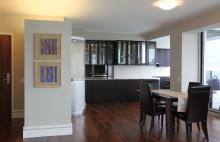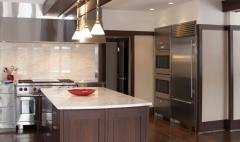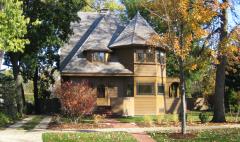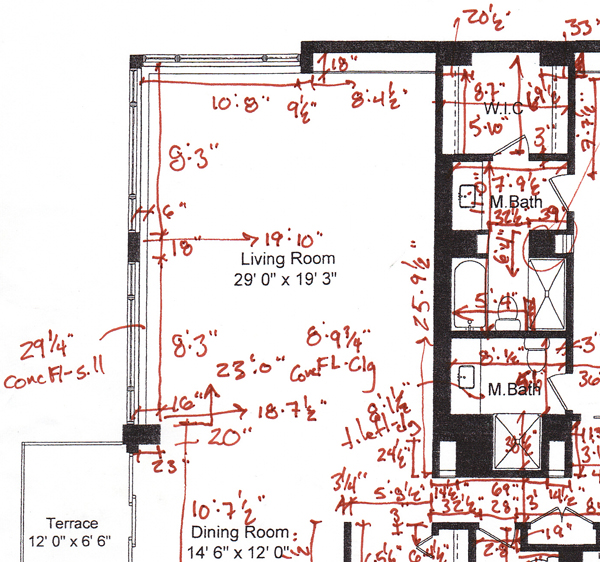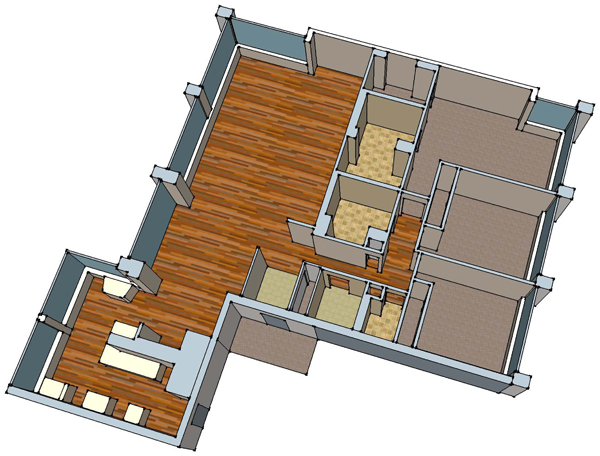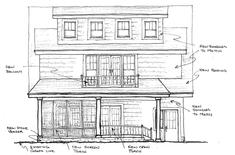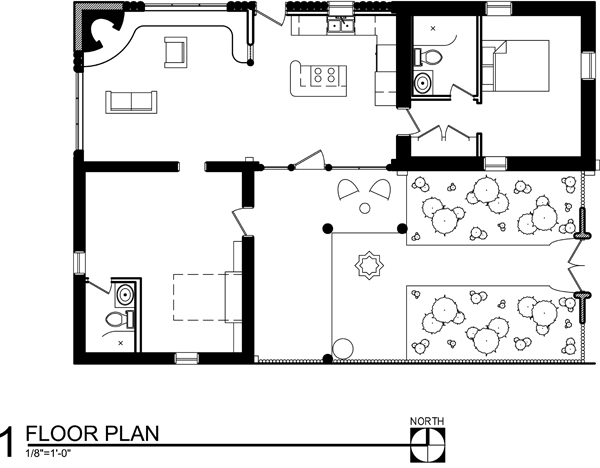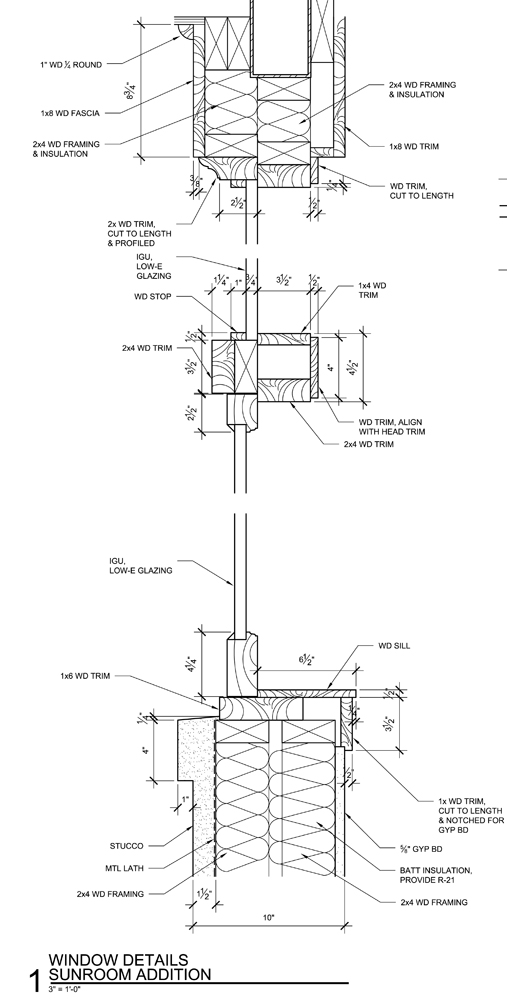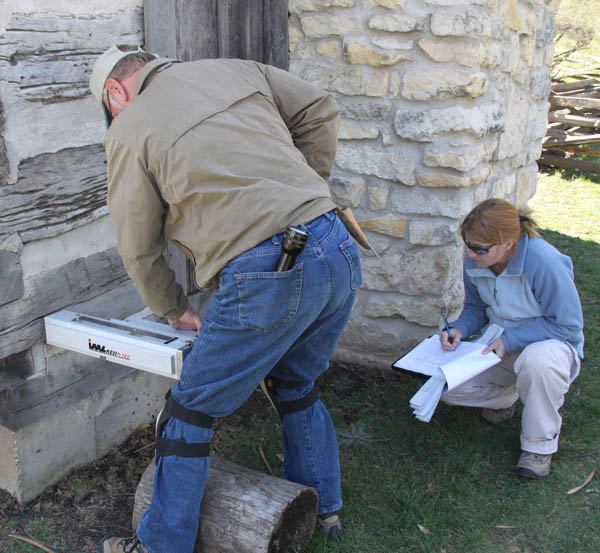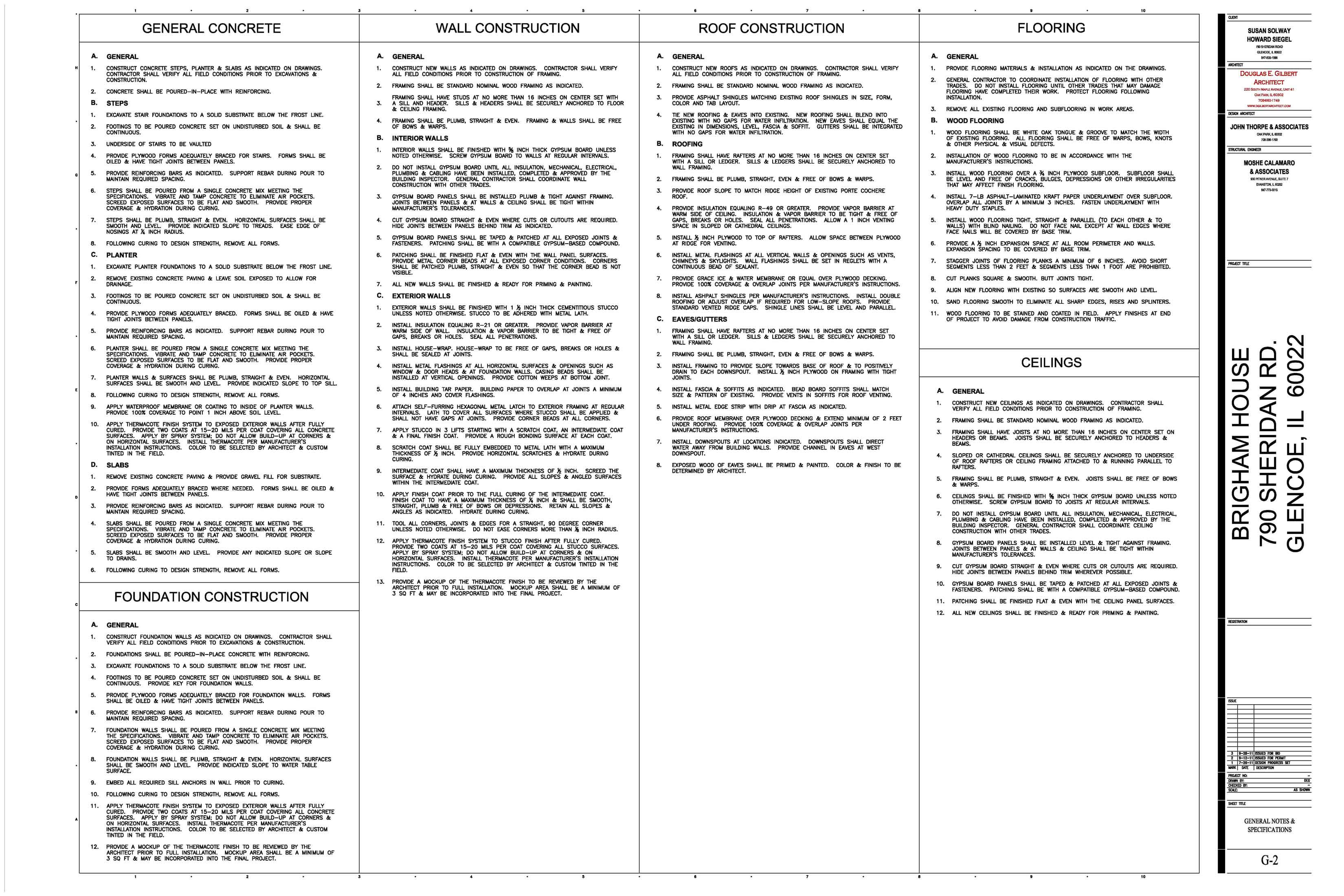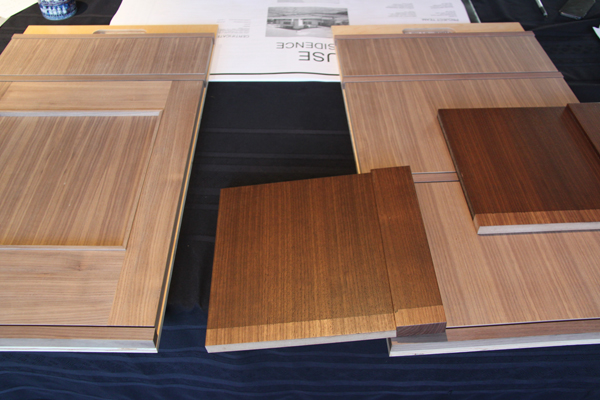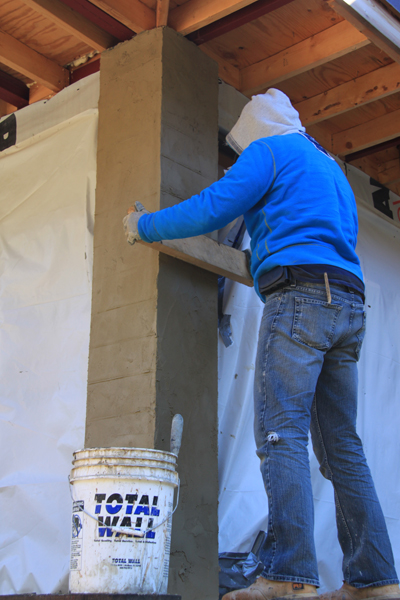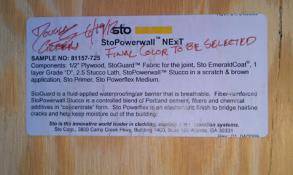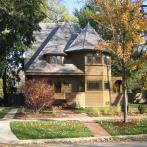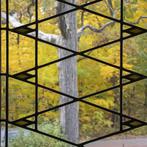A home is a deeply personal place, not just bricks and plaster. And while owners of older homes tend to love the character and details that are found in them, a house must also accommodate lifestyles and tastes of the 21st century. Douglas Gilbert Architect is committed to preserving the historic character of a house while adapting it to modern use. This is true whether your project is a highly significant house, a modest bungalow, or a condo. Residential projects have included additions for family rooms, kitchen remodels, porches and decks, and complete interior renovations. In each case, the designs respect original character and details but are adapted for modern needs.
Process:
It is often said that the purchase of a home is the largest expense a person will undertake in their lifetime. It could also be said that a home renovation or addition is the only time most people will ever need to work with an architect and contractor. This process can be intimidating and confusing to many and can be very stressful. It needn't be and one of the roles a good architect will provide is to ease a client through the process and protect their interests. An architect provides more than just design and permit drawings; they can work closely with the contractor to insure the construction work is done according to the design and to resolve inevitable construction issues. The right architect can also guide a client through the permit or design review process and assist with applications for historic preservation incentives.
The following describes our philosophy and approach on the typical steps most residential projects go through.
Pre-Contract:
Douglas will meet with potential clients to discuss a project and begin a working relationship. The relationship between client and architect is critical to a successful project and relies on mutual respect and trust. At the initial meeting, Douglas will learn about the project and can discuss the firm's approach to design and preservation. And while we do not provide design or professional services at this meeting, it will allow for an accurate fee proposal based on a complete scope of work. There is no charge for our introductory meeting and no obligations to continue working together.
Documentation:
Before design work can begin, an understanding of the existing conditions is necessary. This can vary widely depending on the project, but often includes measuring spaces, taking photos and preparing drawings of the existing floor plans and elevations. Investigations into zoning and building code requirements and restrictions are often necessary.
Design:
The design process should be a highly collaborative one in which we work closely with you to design your project to meet your tastes, goals and budget. The role of the architect is to communicate those ideas and designs in sketches or renderings so that the client can envision how their project will look. And while some clients are comfortable enough to make many design decisions on their own, such as selecting finishes and fixtures, others wish for us to take on all of those responsibilities. Douglas has extensive resources for finding historic salvaged or replica products that can match or complement those of your home. Getting feedback in person, by phone or by email is essential to developing the design to the point where it can be drawn into construction documents. Budgets are determined at this phase and we often recommend working with a contractor to provide estimates based on the design drawings.
Construction Documents:
To be built, a final design must be conveyed in drawings and specifications that a contractor can work from. Typically these documents include dimensioned floor plans, elevations, details and written notes. Construction documents can range from just a single sheet for a simple project to many sheets of drawings and notes. If a client has chosen to have our firm select finishes, fixtures and lighting, the specifications for those choices will be included. Construction documents are also necessary for getting a permit and any required design/preservation review.
Consultants:
Occasionally, a project is complex enough to require specific consultants in addition to the architect. These might be a structural engineer, someone to test materials or finishes or mechanical systems engineers. If there is a need for such consultants, it is usually known near the beginning of the project and their fees will be included or estimated in the initial fee proposal. Clients are also free to hire or recommend their own consultants if they have established relationships, including interior designers, or we can recommend qualified firms.
Construction Administration:
The construction process can be complicated and full of unanticipated surprises and costs. Even the most qualified contractors will sometimes need guidance on how to resolve construction issues while maintaining the original design intent. And an architect can observe the construction process on a regular basis to be sure you are getting the work you pay for. Construction administration typically includes regular site meetings with the client and contractor, responding to questions, and reviewing pay invoices to be sure work paid for has been completed. If changes are necessary, we can review those costs to be sure they are fair and reasonable. Ideally, this is a three-way collaboration and Douglas has a long history of working closely with contractors and clients to provide guidance and resolve disputes.
Recent Projects
Edmund Brigham House
Private Client, Glencoe, IL
2011-13
A kitchen remodeling and sunroom addition at the Frank Lloyd Wright designed Edmund Brigham House from 1908. It was one of the few adaptations of Wright's "Fireproof House for $5,000" and reportedly the only one constructed in concrete. It is a Glencoe Historic Landmark. The rear addition design is based on the existing enclosed porch and includes a concrete planter. The kitchen was remodeled to be more open to the living spaces and included a new powder room. Douglas Gilbert Architect consulted on the design, prepared the construction documents and provided construction administration services. A subsequent project replaced the missing inglenook benches.
Design architect is John Thorpe & Associates. Kitchen cabinetry by R. Maderite, Inc. General Contractor is JMD Builders.
Robert Emmond House
Private Client, LaGrange, IL
2007
Exterior restoration of a pre-Prairie Style house designed in 1892 by Frank Lloyd Wright. The project included removing brick veneer and restoring original wood siding, installing a wood shingle roof, recreating the original entry stoop, and recreating the side porch added in 1895 to Wright's designs. The exterior was painted in the original colors based on paint analysis. Douglas Gilbert provided construction administration, oversaw some exterior paint analysis and provided design detailing for the porches and roofing.
This project was awarded a 2008 Driehaus Foundation Award for Restoration and Rehabilitation by Landmarks Illinois
Completed while serving as Project Architect for Harboe Architects. Gilmore Franzen Architects were the architects of record; contractor was Renaissance Restoration.
Gilbert/Bogusch Kitchen Renovation
Oak Park, IL
2005
Complete renovation of a small kitchen located in a historic 1929 Oak Park condo. The existing layout was reoriented for better efficiency and to ventilate the range. A new breakfast seating bar was installed without sacrificing limited space. Countertops are soapstone and cabinets are maple in a Shaker design.
Designed in partnership with Melissa Bogusch. The contractor was Prairie Plus/Von Dreele-Freerksen.
1300 N. Lake Shore Drive
Private Client, Chicago, IL
2012
A gut remodeling of a three-bedroom high-rise condo with stunning views of the city. The condo is on an upper floor of a 1960s era building and had not been updated for decades. Douglas Gilbert Architect designed a new floorplan layout to maximize storage space, provide a laundry room, guest bath and master suite and better integrate what had been an isolated kitchen with the rest of the living space. Finishes and architectural details were selected by the client's contractor.
George & Alice Millard House
Private Client, Highland Park, IL
2016-18
A restoration and garage addition for the Frank Lloyd Wright designed Millard House from 1906. The house is a Prairie style home set in a forest setting near Lake Michigan. It had been for sale for years and was threatened with demolition before the client bought it to save it, intending to renovate it for modern family life and then donate it to charity. Historic features like the exterior, living room fireplace, and entry were restored. A modern kitchen was designed for the small original kitchen space, and a new master suite incorporates the original master bedroom, closet and a sewing room. A new attached garage was also added matching the exterior Prairie style design and details.
Elizabeth Trail Architect provided drafting and design services.
